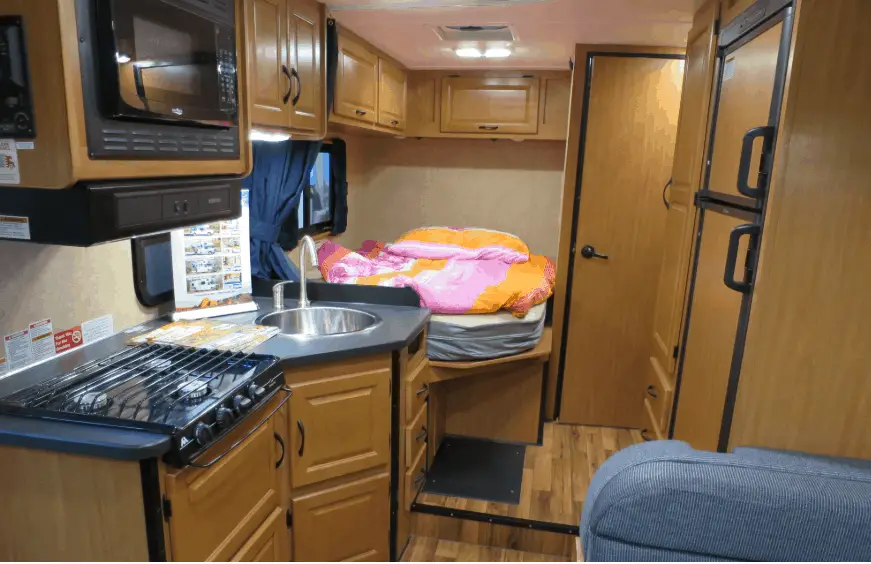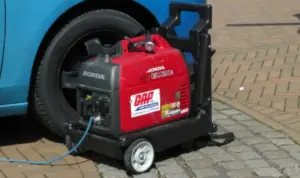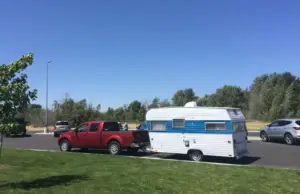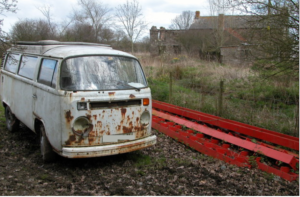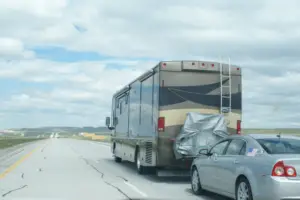Mold is one of those common problems every Rver face. An idle kept RV not properly stored and protected can facilitate the growth of fungus, mold and mildew. Condensation in RV creates an environment for their growth and preventing condensation is key to stopping any kind of fungus in RV.
The smells that you get because of mold can be very bad. When the mold starts to grow you will get a musty smell and removing that too will need some efforts. Best way to stay away from such problems is to take preventive measures and avoid the mold growth itself.
In this post, lets explore ways to prevent mold in camper and also see what methods can be used to get the already grown mold out of your RV.
Preventing mold and keeping it away from RV
Mold or mildew cannot only be damaging to your RV internally but also can cause health issues. It can cause sneezing, coughing, allergies and also other bigger health issues. It can start growing fast and quickly cover multiple places in your RV.
Preventing mold or mildew is the best solution for you. Special care need to be taken to keep mold away from camper trailer while in storage or even if you are camping. Lets see number of actions you need to take to keep the mold out of your camper.
1. Keep check on RV condensation
Condensation is the reason why mold and mildew will start in your RV. And thus, you need to make sure all sources that result in condensation be taken care. The moisture results in condensation and many of the sources of this can in-fact be controlled.
Properly insulating RV can help a lot. Condensation is nothing but the water vapors that turn into liquid and stick to RV surfaces. Such water even in small amount can be very damaging and lead to molds and mildews.
Many of the below listed preventive method are actually to avoid condensation and in turn will help in preventing molds and mildews. To know if there is condensation or not just have a look at your glass windows. You can see water vapors being sticking on it where in you can just draw something using your finger.
You must have seen that happening in you car when it rains outside. Its the same thing. In a RV full of expensive appliances and other items this can be damaging over long term.
2. Use a dehumidifier
The air in RV cannot be seen but it has that potential during winter times to cause the condensation and resulting molds. One way to take away that energy from air is to use dehumidifier to pull out the moisture.
A humidifier can do this and can produce great results. Lot of people use humidifier in RV. You can give it a try but remember that it consumes a lot of energy. So, just keep a check on propane levels. You definitely don’t want dark inside your RV without lights.
There are lots of companies that make portable dehumidifiers and a one weighing around 40-50 pounds should be great for you. Its a great appliance to keep the water vaporous away specially when you have kitchen, bathroom and other things running in a small RV with less ventilation.
An electric dehumidifier can consume around 280-300 watts hours. So, its going to be costly in terms of fuel as well as cost. Also, they do not cost much. Check price of this Pro Breeze Electric Mini Dehumidifier on amazon. Its small, compact and lightweight a perfect fit for your RV.
So, if you can afford it then go for it else follow other simple but effective techniques listed below.
3. Make sure proper air circulation
Another reason why the molds can get formed inside RV is no proper air circulation. Keeping the air fresh is critical and failure to do so will result in growth of mold. Even when the RV is stored there should be air circulating inside.
Humidity can get trapped due to stagnant air. This will result in perfect environment for mildew and molds to grow. And, once the molds form it can get hard to get them away, even though you can try different methods.
Main problem is to locate such molds as mostly they would be forming underneath and will be very difficult to locate. Thus, its necessary to inspect the RV for any such growth and get rid of it at the earliest.
4. Keep all RV surfaces dry
When you have your full kitchen inside RV, when you have full bathrooms and toilet inside, its obvious water may get to the surfaces. Such water sticking to surfaces or flow or hidden corner can result in molds and mildews.
Thus its important that you keep the surfaces as dry as possible. When the temperature outside the RV is falling, such minors things can really make the difference. If your RV has any other appliance like a washer dryer then make sure it is kept open after use to dry out.
5. Cooking pots be covered
Cooking in RV is awesome but minor things like keeping the hot food open can result in water vapors go in air and increasing the humidity. This may seem to be a very small thing but over a period of time it has potential to lead to condensation.
Specially when cooking for a full family, it may take considerable time and thus chances of mold increase. One simple thing you can do is always cover the pots so that vapors do not go in air and lead to condensation.
6. Precaution after hot shower
Taking a hot shower during winter is so much satisfying. But, hot shower vapors can result in condensation if there is no proper escape for those vapors. Make sure the exhaust is on after you take the shower or vents are kept open so that those steams escape the RV.
7. Exhaust fan while cooking
Keeping the exhaust fan while cooking is necessary as high temperature and water vapors from cooking pots will result in vapors. Running exhaust will allow the air to cool down and avoid condensation. It will push the hot air out which can be potential mold growing environment.
You also get exhaust that run both ways. But, at times reverse exhaust can bring in smells. Specially if you have the sewer on same side then that can get really bad.
Keeping the vents open or the windows open can help push the air out. But, it depends whats like it is outside. For example if its raining then that may not be possible. So, you need to decide on a suitable way to push the air out while cooking.
8. Temperature control inside RV
You can try various methods to keep the moisture out of the RV, but there will always be some sources that will keep it moist. Like cooking in RV can get vapors in the air, a hot shower steam will always not escape fully. And, to reverse this effect you can just raise the temperature inside the RV and compensate.
Getting this moisture out using heater can really help. In winter, as it is you are going to have it ON, but just to be really sure raise the temperature a little bit higher. Keeping everything dry is the key.
9. Proper ventilation for RV
Making sure RV has proper ventilation is necessary. This not only helps in getting the vapors out but also makes sure there is good air circulation. Opening the windows for sometime can help.
Vents can bring in air and allow the steamy air go outside. It may always not be possible to keep the windows open and during such times opening them for few minutes can also help a lot.
10. No drying clothes inside
I am sure nobody would be doing this mistake. But, in case you plan on drying the clothes no matter for what time or how smaller, be warned. Wet clothes no matter how less can be really bad for your Rv interiors.
Moist clothes can quickly result in fungus, mold that can be hard to remove unless you try different method that i have listed below. So, moral of the point; stay away from drying clothes inside RV.
11. Check RV plumbing for any leaks
RV plumbing needs special attention during winter. Pipes can freeze with temperature going below 32 degrees. Mostly the RV plumbing is well protected but there will always be some parts that are exposed. Such exposed pipes are prone to damages and thus leaking.
And, if there is any such leakage, then figure it out, repair and fix it before it becomes a source of mold and mildew growing environment. If the RV is in storage then the water should be completely drained out of the whole plumbing system.
And, if you are rving during winter then make sure plumbing system is well taken care of and fixed before the temperature starts going down 32 degrees.
12. RV roof caulking for waterproofing
Roof of the RV is prone to various damages. Cracks on roof can result in water leakage which can annoy you and its also difficult to fix if its already raining or snowing.
RV roof needs proper repair like caulking, using sealant to fix any smaller or minor cracks. If not done it can quickly become a major problem. Such cracks can bring in water droplets and mold or fungus can start growing without your attention.
13. Make use of special products
Moisture in RV can be reduced by using various methods but what if you just get a product simply designed to do this vary thing, then go for it. You can buy RV moisture absorber products to reduce moisture in your travel trailer or pop up camper RV.
Products like damp rid are specially made to absorb moisture and keep the air that will not facilitate molds or mildews. You can buy it online and make sure the RV is prevented from molds or mildew. These products mostly use dehumidifying crystals which are better in absorbing moisture in air.
14. Keep RV clean and clear from moisture
Keeping the RV clean will allow you keep any hidden places from becoming a habitat of mold or mildew growth. Make sure you clear moisture as soon as you see it. Surfaces of any appliances or windows can catch the vapors and that need to be cleaned as soon as possible.
Moisture near refrigerator or any other appliances that works and stores water need to be kept as dry as possible. If you see any wet surfaces make sure you dry them with a soft cloth.
15. Cook outside the RV when feasible
Cooking inside the RV is one of the major sources of vapors which result in condensation. And, if you can skip cooking inside rv then that can be helpful in keeping the RV from condensation or mold.
While during harsh weather this may not be possible but if the weather permits then definitely try other ways to give your RV a breathing space.
16. Shower Not. I mean use campground shower
This may not be a feasible action for all. But, if you can just use that public or a campground facility for taking the hot shower then go for it. This again will give your RV some relief from steams or vapors that result in condensation.
You definitely don’t want your costly fifth wheel or other motorhome to get hold of molds and to do that you may have to do things like this at times.
17. Don’t RV in high humidity regions
This is an obvious one but not all can take action on this. If you are from a region that has high humidity then you cant help it much.
But, if you plan on traveling then check the weather and avoid areas that are expecting high humidity or are known for humidity. Humidity level of 40-50% is ideal and any higher percentage means a real challenge to keep mold out.
18. Early detection of hidden mold
The earlier you figure it better it is going to be. Molds start as very small and could quickly become a menace that may need thorough treatment and cleaning.
Thus, try to keep the RV clean and look for any such growth of mold and mildew. Specially, when the RV is in storage check the RV or travel trailer for any condensation and molds.
A stored RV can be a house of humidity and condensation if the conditions aren’t that good. Also, if the RV was not fully drained then there are chances of water leakage and subsequent fungus growth.
19. Use a portable fan
A smaller fan running inside the RV can facilitate air circulation and thus help reduce moisture and subsequently molds and mildews. It obviously depend on how big your Rv is.
Such a method can be used to keep the air moving in a smaller trailer or other rv. For big Rv’s you need something that can allow for moving air using proper ventilation or other techniques mentioned above.
What really is mold and identifying it
While prevention is the best way sometimes you can just wake up to see those molds inside the RV. So, how do you get rid of molds in rv. There are multiple ways to treat and clean mold or mildew either natural or by using ready made products.
Before we look at the ways of cleaning a mold or mildew lets find out how does a mold look like and where can it grow inside a RV. And are mold and mildew same? Before you start treating it using various options given below just test if its really mold and not something else.
Mold vs mildew
Mildew and mold are not same. Mildew is a type of mold but both are type of fungus that start growing due to moisture. Mildew mostly grows on wet surfaces and is whitest grey in color which can turn brown after some days.
Mildew isn’t that a big threat as compared to mold though. It will take less efforts to clean mildew than a tough mold. Usually you will find it growing inside bathroom, at corners or any other corners of wall and floor. It appears like a powder and will give foul smell.
Mold is a tougher fungi that will start as a foul smell and quickly grow. It will be a musty smell in case of mold too but it will be much darker than mildew.
Most people ignore mold as it looks like just another dirt patch but it can become a problem much bigger than just a dirt patch. It can be of different colors like green, grey, black or red but will be mostly darker.
What really causes molds
That white mold in RV can grow on organic matters. Its starts growing when the environment is humid and moist. Places such as ceiling corners edges, bathroom surfaces, walls, wallpapers, near sink edges and corners are perfect places for mold to grow inside a rv.
RV refrigerator is another place where it can grow. Water is the main sources which can be due to spills, leakage, or the water vapors from the cooking or hot showers. We already saw multiple ways to prevent this from happening above. Or if the region where you are rving is itself a high humidity one then there are more chances of mold and mildew.
Methods to get rid of mold or mildew
Mold not only is bad for your RV interior but is a a health hazard. It can cause lots of health issues and you don’t really want to be living in such a environment. Specially if you are a family with smaller kids then better take an action as quickly as possible.
Molds can not only be in the interiors but also on exteriors. RVs like pop up camper which are not covered properly will start seeing molds during storage. Its not only towable or smaller RVs that see molds but also expensive RV’s or motorhomes like class A RV or class C RV.
It all depends on how the RV is protected and what kind of environment is it for mold growth. You may have the best RV but if it has interior environment that facilitates the fungus growth then molds will grow for sure.
1. Baking soda to clean mold
Using baking soda for getting rid of molds is a common solution many people use. All you need to do is mix around half a spoon of baking soda in a bottle of water. Use a spray bottle to put the splashes of the mixture on the mold affected areas and then clean with a brush or scrub with hard area.
Cleaning this way will wipe out mold. You may have to repeat the process few times to get it fully cleaned. Baking soda also works in removing the musty smell occurring due to molds and mildews.
2. Using Hydrogen peroxide
Get a spray bottle with hydrogen peroxide and put sprays on the molds, wait for few minutes and then follow with scrubbing using a brush.
3. Vinegar to clean the mold in RV
If you have vinegar in your kitchen then try using it directly on the molds and clean it properly using scrubber. It may not smell great but it will definitely help in getting rid of tough molds.
4. Make use of tea tree oil
Add few drops of tea tree oil to water and put sprays on the mold affected region and then follow by scrubbing. This will get rid of molds and also help in preventing further growth for some days.
You can also buy ready made RV mold cleaner products that come in spray bottles. This can be an easy solution as you don’t have to make it yourself. Just follow the steps and get rid of molds.

